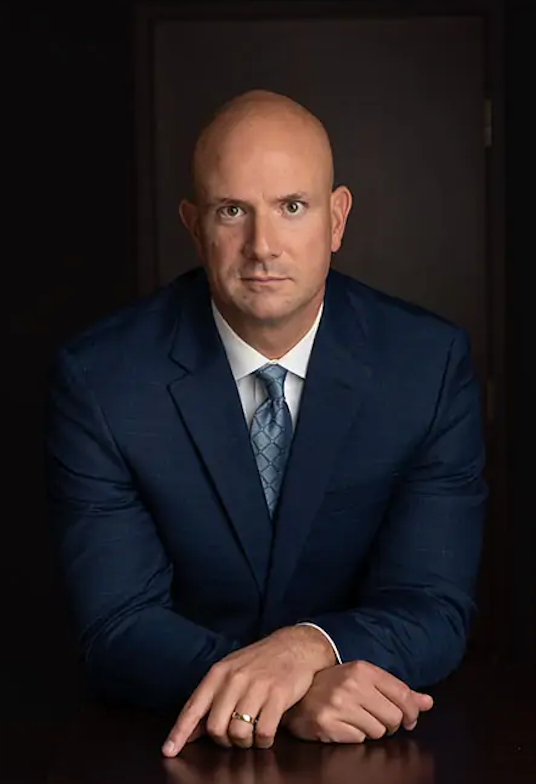Transcripts

Erik: Joining me now is Forest For The Trees founder Luke Gromen. Luke, I've really been looking forward to this interview. You know, it's been fascinating to me since that Fed survey came out saying that an unprecedented 41% of respondents had become concerned about foreign divestiture of US assets. I've had just wildly opposing views. David Rosenberg told me just fade that entire report. It's nothing to worry about. That's, you know, just don't even think about that being an issue. Whereas Louis Gave seemed to think it was a huge issue. And I know that you've probably out Louis Gave because I heard you say in another interview that you thought it was on par with the Nixon moment on August 15 of 1971 when President Nixon effectively defaulted on the Bretton Woods agreement. So, talk about what's going on here with the seizure of Russian FX reserves and also the extra judicial seizure of other Russian owned assets in the United States. Is this a big deal? Why is it a big deal and why aren't many people other than crazy nutcases like you and me taking this seriously?
Luke: Hahaha crazy nut cases indeed, right? Thanks for me back on Erik. I think it's a really big deal simply because the US has a supply demand problem for treasuries. And when you have a supply demand problem, you are trying to make your assets more attractive not less attractive. And so to me, I just think it's a big moment, because it had never been done. I mean, it had been done to some smaller countries, but it had never been done to a G8 nation, it had never been done to a nation on the UN Security Council. Have never been done to the world's biggest producer of commodities, to the world's biggest exporter of energy. And I think we're seeing that it is a big deal in markets. And by that, I think we can just look at the ruble dollar rate doing what it is done, since those sanctions were announced. I mean, we saw the ruble go to whatever it was 120 against the dollar. And President Biden pronounced it dead and buried and called it rubble. And, but that was sort of, you know declaring victory. You know at the end of the first quarter, and the second quarter, the game featured Russia coming out and effectively defending the ruble with gas. And people say, well, the ruble is a one-way market, the ruble, you can't I can't buy and trade rubles. Well, the US made it a one-way market sell side only when they put on the sanctions, right. So you sort of can't have that argument both ways. So, the US made it sell side only one way and the Russia came out and said that's fine. We're going to defend it by saying you gotta have it to buy gas. And so, there's sort of this bifurcated reality where, you know, paper FX traders can't buy rubles or the spreads not within you know, the numbers, not what they see on their screen. And I think that's right. I think I sympathize by that. But the real market, I think that the paper FX market for rubles is a sideshow, the real game is Europe buys $150 billion a year of energy from Russia. And once the US did what it did sanctioning FX reserves and trying to trigger a collapse in the Ruble. It forced Russia to defend the Ruble. And Russia really only has one thing to defend it with and its energy. And so they defended the ruble with energy because of what was done to the FX reserves and we've seen what the ruble has done since it's trading at 60 today. It's up against the dollar, pretty notably on the year. It's the best performing currency in the world on the year. And it's really, it's a two way market. If you need gas, you're buying rubles. If you don't need gas yeah it's still a one way market, but they don't care. They're trying to defend their currency.
So I think when you look at what has happened in the markets as it relates to that, I think that all goes back to this sanction of FX reserves and the implications of that for others which is, now that that weapon has been deployed, everybody else is going to I mean, this is warfare. This is just economic warfare. And so, once your enemy or your adversary deploys a weapon, you immediately if you are smart, if you have a brain in your head, you immediately go about looking to disarm or protect yourself from that weapon. And how do you do that at the very least you stop growing your holdings of treasuries, at the very least, and you look for other alternatives. Clearly, I don't disagree with the point that there are not many other sovereign debt markets... There are no other sovereign markets that are that are as deep and liquid as a treasury market. Of course, Treasury markets had its own liquidity problems in recent years, it's only been deep and liquid at key times or anytime there's been stressed because the Feds been in there injecting liquidity, which is not exactly a great reserve asset characteristic anyway. So to me, I think what we're seeing in ruble, gas, energy geopolitics suggests it was a very big deal. And I think the ultimate outcome is kind of what I lead off with, which is, the US has a structural deficit problem, it needs more buyers of treasuries rather than less, preferably at negative real rates, actually it has to be at negative real rates with our debt levels this high and our deficit levels this high. And the US is out there advertising, hey these aren't safe, we will take them if you are a bad actor. And the reality is yeah Russia is a bad actor. But Japan was a bad actor in the 80s. The Germans were bad actors. At one point, the French were bad actors, the Israelis were bad actors, the Saudis were bad actors three years ago. So there's, you know, who's a bad actor and who's not shifts a lot. And so I think it's just going to touch off, I think, a sort of a slow, steady, relentless bid for physical gold as a reserve asset or a redeployment of surpluses into productive things, right. So instead of the Saudis storing any excess surpluses in treasuries, they'll store them in developing their own country or developing elsewhere, paying Dustin Johnson a gazillion dollars to go golfing, whatever they want to do. But the bottom line is any dollar any surplus that is diverted away from the Treasury market increases the pressure on the Fed to ultimately finance US deficits, because they're the only one with a big enough balance sheet to do it without crowding out the domestic and the global economy.

Erik: Joining me now is Ronnie Stoeferle, fund manager for Incrementum. Perhaps better known is the principal author of the In Gold We Trust report. Now, this report is a big deal folks, it comes out once a year and it's completely free. You'll find the download link to the report as well as the alternate language versions of the report as well as a video introducing the report and the slide deck associated with the report which is what we're going to focus today's interview on. So I do recommend that you have that slide deck in front of you as we're going to be referring to the graphs and charts it contains extensively throughout this interview. You'll find the download links in your research roundup email. If you don't have a research roundup email, just go to our homepage, macrovoices.com. Click the red button that says looking for the downloads. Ronnie, let's start with the big picture. You've been doing this for quite a while now. Well over a decade. Tell us a little bit about the history of the report and how we got to where we are today.
Ronnie: Hi Erik. Thanks for having me again. Well actually this is the 16th annual In Gold We Trust report already. I started as a little analyst doing Asian equities in an Austrian bank. And in 2007, due to a mining stock that I had privately that developed really well. It was a 40 bagger, which is kind of a blessing but also a curse because you think okay, well, that's just normal in the mining space. I went to my boss and said well I would love to write a little bit about Gold. And he said, Yeah, go ahead. Gold is always interesting. And yeah, back then I started writing about gold and it still amazes me, it still fascinates me. And actually, this year, we did hit a new all time high. It's 400 pages of research about gold, as there's just so much going on. And I think this is really the interesting thing. Gold is not only about supply-demand, it's about obviously opportunity costs coming from the bond market, from equity markets, from commodity markets. It's about central bank policy, it's about geopolitics. It's about de-dollarization. We cover the topics of ESG. In the mining space, we write about mining stocks, therefore it's still as I've said, it's truly amazes me and I think there's lots of to be honest rubbish, gloom and doom research out there in the gold space. And we want to make a difference and want to make a solid, sober case for gold. And I think that's what's really missing. And therefore, we are getting feedback from all over the globe. We already have 700,000 downloads for this year's report. So it's really, it's a big thing and it wouldn't be possible without the support of my staff. So there's 20 people working on the report now.

Erik: Joining me now is Variant Perception’s Tian Yang is still head of research, but he's also taken over the CEO position. So, congratulations on that Tian.
Tian: Yes thanks, Erik. Great to be back on MacroVoices.
Erik: Variant Perception’s research is some of the best in the industry and Tian's colleagues at Variant Perception were kind enough to share with us, the May 5 leading indicator watch. Now out of respect for Variant Perception’s paying subscribers that is a few weeks old so it's dated but still very much relevant. Tian, I really want to dive into this because you know my take has been I think the Fed is intentionally trying to engineer a recession. But frankly, I'm not nearly as data driven as I should be. So let's dive into the data. Listeners, you'll find the download link for that May 5 leading indicator watch in your research roundup email. If you don't have a research roundup email, just go to our homepage, macrovoices.com. Click the red button that says looking for the downloads. Tian, let's dive into this and talk about what's going on data wise. Are we looking at just a little blip here or is this a recession coming our way?
Tian: Yeah, that's clearly the kind of top of the mind question for investors right now. We try to measure the business cycle in hopefully in an objective way. And so, often when we think about recessions and business cycle, we're often trying to incorporate both kind of soft financial market data, survey data, as well as the hard kind of economic data right? You know, the raw kind of real economic data and combining the two. So overall, when we look at our models in terms of the cycle. We were still more leaning towards a mid cycle slowdown right now, as of what we can see in the data. The kind of really bad inputs of things linked to liquidity. So as you say, the Fed is clearly tightening financial conditions, you know, straining excess liquidity from the system. A lot of indicators, we try, like the CFI which is a diffusion of global central bank policy, that's very bad. So the liquidity front is very bad. However, in terms of the hard economic data, it is slowing but it's not quite at levels you typically see going into a recession. So typically going into a recession, you tend to see kind of a major drop in building permits, say up to six months ahead of time, you tend to see kind of a huge surge in initial claims off the lows. And so some of these things are starting to slow a little bit, but we're not quite there. So I think as of right now, I think we're still probably more thinking it's more of a mid-cycle slowdown than an outright recession. But obviously, what we need to do is essentially as the data evolves and just see how it plays out.

Erik: Joining me now is Gavekal co-founder, Louis-Vincent Gave. Louis, it's great to have you back on the show. I've really been looking forward to getting you on because you know, you're a guy who is a French guy based in Hong Kong also have a home in Canada. Very international guy. And something that actually surprised me when I asked David Rosenberg last week about the Fed survey, citing 41% of respondents saying that divestiture of US assets was a major concern. Rosie thought it was not really a big deal. And I wanted to get the perspective of a European on this. How do you see this situation? Is it no big deal that in my feeling about this, we kind of abandoned the rule of law and said look, we know Russians are bad guys. So let's just take their FX reserves and these oligarchs, let's seize their yachts not through rigid and aggressive application of the rule of law with a court of order, but rather by abandoning rule of law and saying we don't need a court order. Their Russians after all, we can do whatever we want. Is this going to actually hurt the financial system or am I silly to think that that's a real concern?
Louis: Well first of all, great to hear from you Erik. I have to say I need to do a better job of tracking our conversations. Because each time we talk, it seems something fairly big is happening. I think, one time we had the oil price go negative while we were talking. This time, we've got the NASDAQ down almost 5%. So maybe I need to start buying puts each time you and I are scheduled to have a conversation just buy puts on everything, I guess. But no, look, it's great to catch up. And no, I think it's the way you frame the question is exactly right. I would add one more thing is, you know, we've basically chosen to in essence change the rule of the games on people we don't like. We've changed the rules of the games on the Russian. And we've decided to do so at a time when real returns on Western assets have never been so low right? So you got you know, your real rates, your real returns on US Treasuries is about as deeply negative as it's been in two generations. And it's at this moment that we choose to tell the world, not only are you going to lose 3, 4, or 5% real per year in these US Treasuries or in these German bonds. But if you don't behave in the way that we want you to behave, then you're going to lose 100% overnight. And without due process, without debate in Parliament, without, you know, your day in court. We're just going to grab your football club, grab your yacht, grab your everything.
Now, I do fundamentally believe that this is a massive game changer. Because, you know, the way I conceptualize the world, probably the greatest comparative advantage of the western world is the rule of law and the property rights that derive from that, right? You know, the reason every rich Chinese guy buys a house in Vancouver, the reason every Saudi prince buys a house in London, is not because they think oh returns on Vancouver real estate is going to be better than returns on Shanghai real estate. But it's an essence, it' your safety asset, right? You buy these assets, if something bad happens, I can move to my house in Vancouver and I'll be fine. But now what we've told the world is well if tomorrow, you know Xi Jinping invades Taiwan, then we're going to take your house in Vancouver. Now, if you're the rich Chinese guy who's bought this house, you think well I bought this house for precisely this potential scenario where all of a sudden there's a war in China, and I want to get out, and you're telling me that at this very moment, you're going to confiscate it? Well then this house isn't what I thought it was. And, you know, so that I think is the first massive shift. We've in essence put a big question mark on the safety of a lot of assets in the Western world.
But I would say there's a second, and I think most people that I talked to seem to understand this and are deeply uncomfortable with it. Because, you know, you take the Russians stuff today, tomorrow who's to say that, you know, you know, they're not going to take your stuff for making money on oil stocks and contributing to the climate crisis or the day after tomorrow, why can't we take the assets of, you know, the Social Media Barons because they've created a mental health pandemic amongst our kids. You know like once you can just grab stuff, you know, why stop at just the Russians. There's plenty of other bad guys out there. So you can just keep going down the list of bad guys and indeed if you're a Saudi prince, if you're a Chinese tycoon, you feel most likely that you're not that far down the list of bad guys. So right there, you know, I think by seizing the central bank reserves, we've really completely upends our entire global financial architecture. You know, before 71 we were on a gold-based system. After 71, we were really on a US-Treasury based system. And now we've just told the world the US Treasuries are not what you think they were. And neither is Western real estate. So that's a profound shift.
But there's a second shift, and I'm sorry to drawing on because this is really important. And that is, you know, if you're looking at this from an emerging market point of view, it's the speed at which decisions were made and the process through which decisions were made. You know, I think if you're an emerging market guy, let's say you're a Chinese tycoon, you're used to your government making unilateral decisions without debate in Parliament, without, you know, campaigning on a platform without any of these things. You know that's part of the world you live in. And that's one of the reasons you want to own Western assets. Because in the Western world, the policy risk is just far lower. It's you know, getting anything done is a long process. But again, this has just shifted. All of a sudden, what we've seen is that over the course of a weekend, across the western world, rules can be changed without voters having a say, without Parliament's having a say. And you could say, well we already knew this, because we saw this through COVID. But this is now a confirmation that the sort of processes that we saw through COVID where governments unilaterally decide to do stuff, again, without debate in Parliament, without any kind of, you know, democratic feedback loop can now be applied not only on people's, you know, freedom. I you know, locking down people, etc. But also on their property rights. So again, if you look at this from China, or from Saudi Arabia, or from any one of many emerging markets, you're like well this is just like home. Like, I used to think the Western world was so different. I used to think it was so special, but when push comes to shove and their back is against the wall, it turns out that actually, it's the same thing as emerging markets.

Erik: Joining me now is Rosenberg Research founder David Rosenberg. Last time we had Rosie on the show he was a bear in a room full of perma-bulls. David, I think there was something to what you told us that maybe stocks don't just go up all the time, after all. Give us the rundown here. What's going on? Why is it happening? How come other people didn't see it as early as you did? And what do you think is coming next? Is this over? We just had David Tepper, when I should let our listeners know we're speaking on Tuesday morning, since the market is moving very quickly. From our perspective, market has been falling. We're looking at about 3960 on the S&P right now. David Tepper covered his shorts that caused the market to rally dramatically for all of about a half an hour and back down again this morning. What's going on? Where's this headed? And how much further down do we have to go?
David: Well, you know, back to your initial comment about, you know, what is it that the bulls didn't see at the turn, was they just didn't take their own advice. Because, you know, through the previous two years, of what was a parabolic move in the stock market, the mantra was don't fight the Fed. But you see, that works in both directions. And so what's wrong about the bulls staying longer in the game than they should have was that they're fighting the Fed in the other direction that the Fed is. If you're long only investor, the Fed isn't your friend anymore. At some point, they will become your friend. The point I was making all along was that, you know the 4800, call it peak on the S&P 500 at the start of the year was a real fictitious peak. We had no business being there. And so what's happened these past three years, three years in a row of unremitting policy easing by the Federal Reserve. 2019, the Powell pivot cut rates three times. We expanded the balance sheet after telling everybody in 2018 how he was going to move the funds rate above neutral, never came within 50 basis points of that and the Fed was going to shrink the balance sheet, but they did the opposite in 2019.
And then in 2020 of course we have the pandemic and the lockdowns and we get double barreled rate cuts, and then unprecedented balance sheet expansion with the rates to zero. So in 2021, the easing by the Fed wasn't about interest rates, it was about ongoing balance sheet expansion was continued to stimulate the animal spirits in the stock market. You can't go back in history and find too many times when for three consecutive years, the Fed was continuously easing monetary policy. And so you see what happened was when you look at the stock market, it's the product of two numbers. Earnings and the multiple that investors are slapping on those earnings. And that gives you the S&P 500 price. So you see what happened was that from the end of 2018 to the end of 2021. The S&P 500 practically doubled in a three year span, which hardly ever happens. I mean, it happens, happens usually at bubble peaks like back in 2000. And when you do the arithmetic. 70% of this three year bull market that of course included the bounce off the march 2020 lows, but 70% of the three year bull was multiple expansion and only 30% was earnings growth. I'm not going to tell you that earnings weren't good. But earnings were really the two big player in this equation.
In a normal bull market, the main actor is earnings growth. Earnings are 70% of the driver for valuations. And the multiple is the other 30%. And we reverse that in that three year period from the end of 2018 to the end of 2021. So, you know the Lord giveth and the Lord taketh away. And so when you have really a multiple-led bull market that has been predicated on Fed policy tailwinds, you have to know that when those tailwinds become headwinds, that 70-30 split between multiple and earnings are going to switch chairs at the table. So I just saying naturally that if we get that mean reversion of really what a true driver of the market is, which is not predominantly multiples, but predominantly earnings. We're going to get to 3600 and run away to 3600. I'm just not convinced will necessarily stop there. But that's just the arithmetic of what a normal market would have taken the S&P at the peak. We had no business being at 4800. And now we're paying the price for the fact that the driver of it, which was fed policy, that movie is now we’re winding in the other direction. And that's the story.
MACRO VOICES is presented for informational and entertainment purposes only. The information presented in MACRO VOICES should NOT be construed as investment advice. Always consult a licensed investment professional before making important investment decisions. The opinions expressed on MACRO VOICES are those of the participants. MACRO VOICES, its producers, and hosts Erik Townsend and Patrick Ceresna shall NOT be liable for losses resulting from investment decisions based on information or viewpoints presented on MACRO VOICES.
